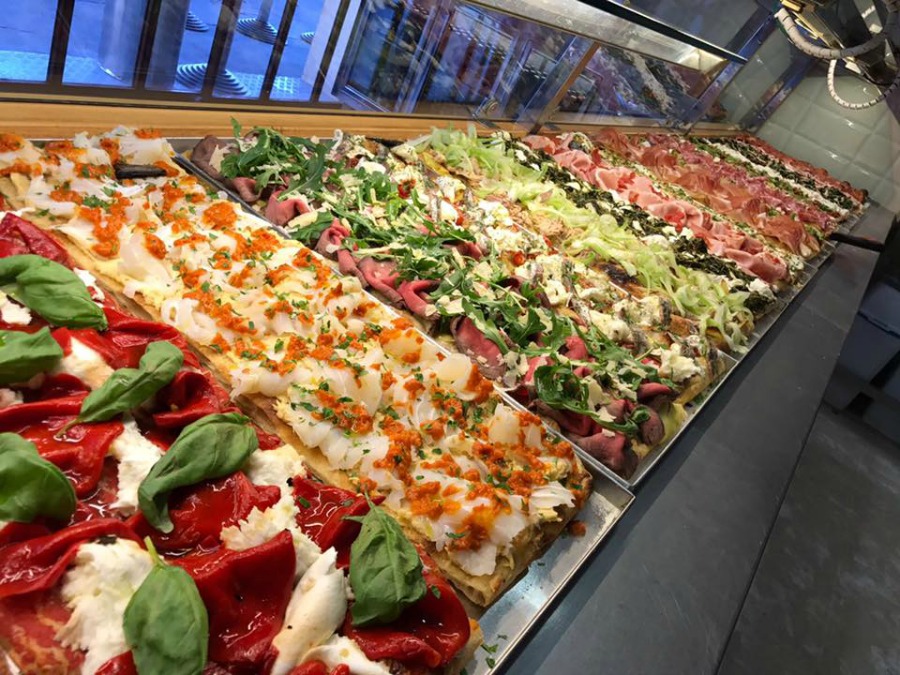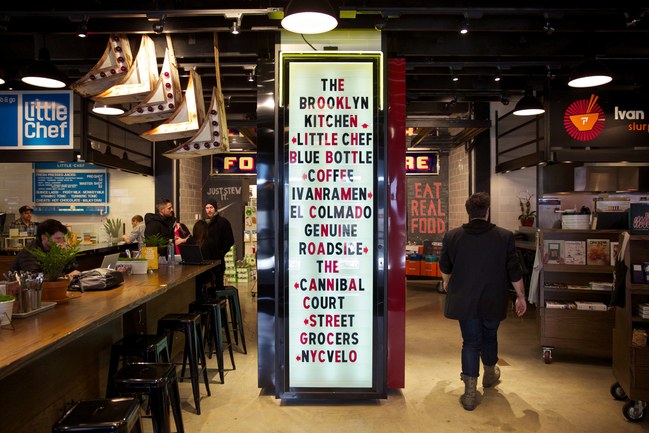
Jan 10, 2018
Vivienne Clarke | The Irish Times | January 8, 2018
Restaurant owners have been urged to take non-refundable deposits from customers, in order to halt the growing problem of “no-shows”.
The Restaurants Association of Ireland is calling on its members to take the deposits, saying the problem of people booking tables and then not turning up was “rampant across the country” over Christmas.
Adrian Cummins, chief executive officer of the association told Newstalk Breakfast there was a marked increase in no shows. “My phone was hopping over Christmas,” he said.
In a bid to combat the problem the association is suggesting that members take a non-refundable deposit of €20 for bookings for tables of more than four.
The deposit would then be deducted from the final bill, but if the party does not turn up the deposit will be forfeited.
Mr Cummins pointed out that bookings for tickets for concerts and the cinema are forfeited if people do not turn up.
“The industry needs to do something about this. We need to stamp out ‘no shows’. People will have to give advance notice of 24 to 48 hours if they are going to cancel.”
He told of one restaurant which had experienced the “no-show” of a party of 20, which was one third of the restaurant’s capacity and had been very costly for them.
He said restaurants have to bring in staff and produce and need some sort of notice. The amount of the non-refundable deposit could be set by the restaurant and could vary from small operations to large premises.
CONTINUE READING

Jan 5, 2018
Hillary Dixler Canavan | Eater | December 28, 2017
As the unhinged, oft-lamented year 2017 careens toward its merciful end, Eater takes a look back at what actually happened in North America’s dining capitals.
Despite what commenters on Facebook would prefer, politics definitely didn’t stay out of food this year; whether it was changes in tipping or immigration laws, the restaurant industry stepped to the plate, supporting causes like a Day Without a Woman and a Day Without Immigrants. Meanwhile, the post-Ailes, post-Weinstein moment in America quickly found its way to the restaurant industry, where titans of the field like John Besh and Mario Batali stepped down amid sexual misconduct allegations, the sexism at play in the industry laid bare (we all knew it was there, didn’t we?). But this feels different. The restaurant world isn’t alone in the reckoning. Even the staid James Beard Foundation is considering policy changes for its awards going forward.
It was a tough year in many cities for external reasons: Houston was slammed by Hurricane Harvey; wildfires raged in wine country and Southern California; Mexico City experienced a devastating earthquake. Chef José Andrés ascended to icon status for his tremendous work feeding the victims of disasters in Houston, California, and Puerto Rico, and for rallying other chefs to join him. (His increasingly direct challenges to President Donald Trump — wtf, 2017 — were also a bright spot this year.)
And then there’s the money-and-fancy-chains issue. Several editors report (like last year) that restaurants in their home cities are struggling with skyrocketing rents and competition from the deeply financed chains that can afford them. For many cities, new openings trended toward extremely casual places (including many of the all-day variety) or high-end showstoppers. For every Vespertine, an equal and opposite Kismet; for every the Grill, an Atla. That’s not all bad, but it does leave room to worry about how the mid-market restaurant will break through again in 2018. Here’s hoping.
On a happier note! Look at how cool these Young Guns are, whether it’s the pastry chef making desserts that sing at Honolulu’s most acclaimed restaurant or the tea master bringing an original outlook to Detroit. And Eater’s best new restaurants of the year ran the gamut from a St. Louis double-duty restaurant to a pasta church in Los Angeles. National critic Bill Addison dubbed a Southern restaurant all the way in Seattle the single best new restaurant in the country. That’s an undeniably fun development.
CONTINUE READING

Dec 16, 2017
Andrea Strong | Eater | December 13, 2017
In early October, Danny Meyer made a big announcement. It wasn’t about tipping, or another iteration of the Shake Shack hot chicken sandwich. This one was different. He would be entering the world of private finance, starting a $200 million investment fund, with stakes in reservation-making app Resy and the New York City-based Joe Coffee. His fund, Enlightened Hospitality Investments LP (EHI), now joins a group of newly formed investment funds cleverly eyeing (and investing in) restaurants.
It’s quite an about-face from the climate just a decade ago. “Ten years ago, investment took place much farther down in the growth cycle of a concept,” says Greg Golkin, who co-founded the Kitchen Fund in 2016 to invest in early-stage scalable restaurant concepts. “You would see private equity funds or strategics coming in when brands were at scale. If you had an early-stage restaurant concept, you had to source capital from high-net-worth friends and family, or from family offices [a more formal version of investment vehicle for high-net-worth private individuals]. There was no strategic capital in the space early on.”
What’s moved the needle for many investors — and caused the creation of new funds like EHI and the Kitchen Fund, and the frenzied interest of growth investors like L. Catterton, Roark, and Karpreilly, who had previously taken positions in Chopt, Primanti Bros., Burger Lounge, California Fish Grill — is the fast-casual revolution.
“It used to be that when you opened one restaurant, you had one restaurant until you were so busy that you could not serve one more meal,” says Basu Ratnam, founder of Inday, a healthy Indian fast-casual restaurant, one of the Kitchen Fund’s first investments. “Then you thought about number two. But now, there’s a different mentality. Now you have people opening with immediate plans to scale.”
That’s in part because “away from home eating” has skyrocketed in recent years. In 2015, for the first time ever, people in the U.S. spent more money dining out then buying groceries, according to data collected by Bloomberg.
The high-return allure of the success stories like Shake Shack, Chipotle, and Sweetgreen has also made investors hungry to get in early on the next big idea. Entrepreneurs are listening, creating restaurant brands that promise investors growth and scalability. The fastest-growing categories are healthy fast-casual concepts like salads and grain bowls, “as well as anything that focuses on sustainability and organics,” says Anish Gandhi, managing director at the investment bank Brookwood Associates.
Gandhi is also seeing interest in Mediterranean concepts like hummus and kebabs and “multi-ethnic” concepts like Sushirrito and Velvet Taco. Velvet Taco, which debuted in 2011 and opened its second location in 2014, offers dishes like chicken tikka tacos and received a significant strategic growth investment from private-equity firm private equity firm L Catterton in 2016. It now has seven locations across the country.
CONTINUE READING

Dec 5, 2017
Elizabeth Dunn | The New Yorker | November 29th, 2017
In 2010, the chef Todd English opened an indoor market in the basement of the Plaza Hotel, in Manhattan. Back then, the term “food hall” was still largely alien to many Americans. It belonged to Britain, to describe the section of a department store where one might buy tins of loose-leaf tea and Christmas hampers, or pause for a glass of champagne. Todd English’s version stuck close to that mold, mirroring “the aesthetics of the finest food-specialty markets throughout the world,” and it was an overwhelming success. In its wake, the American food hall flourished, and took on a life of its own. Some included butcher shops, or bakeries, or kitchen-supply stores. Others focussed solely on prepared food, such as bánh-mì sandwiches or tacos, served over the counter by local venders. A dominant aesthetic emerged: exposed ductwork, cement floors, subway tile, and long, wooden communal dining tables. Anachronisms like New York City’s Chelsea Market and San Francisco’s Ferry Building, once called “marketplaces,” were duly rechristened. In 2010, there were a couple dozen spaces that fit the definition in the United States. Garrick Brown, who studies the topic for the real-estate-services company Cushman & Wakefield, anticipates that there will be three hundred by the end of next year. In Manhattan alone there are now at least sixteen food halls, with many more in planning or construction. A project by Anthony Bourdain, in the meatpacking district, intends to cover a hundred and fifty-five thousand square feet, nearly the size of three football fields.
In contrast to the food court, with its Auntie Anne’s and Panda Express, the food hall eschews big chains in favor of local, artisanal purveyors, dazzling the visitor with a vision of a thriving economy of small businesses operating side by side. It is tempting, therefore, to see the proliferation of the food hall as a victory for the little guy. This is not entirely accurate. Much of the current expansion is driven by property developers grasping for ways to reinvigorate moribund shopping centers, or to gin up interest in new developments. Traditional retail is waning; millennial consumers, the marketing consensus tells us, aren’t interested in “stuff” so much as in experiences—as well as choice, convenience, “authenticity,” and things that make good photographs. You can see where the food halls come in. The markets themselves can provide landlords a healthy income, but, to those looking to offload high-rise apartments or office space, they offer prospective tenants something even more stirring: an amenity. Drop a food hall into the mix, and the whole development basks in the soft, Edison-bulb glow of the small food businesses inhabiting its ground floor, luring tenants with the siren song of pour-over coffee and craft beer.
Gotham West, a luxury apartment complex on Manhattan’s far west side, was among the first to cotton on to the idea, in 2013. A developer like Gotham can offer a persuasive pitch to chefs struggling to raise enough money to open a stand-alone shop: minimal startup expenses, short-term leases, and rents that, while expensive on a square-foot metric, come in well below the total cost of a larger conventional restaurant space. What’s more, the food-hall developer provides marketing and handles hassles like wiping down tables, washing plates, and paying the gas bill. Think WeWork, but for restaurants.
CONTINUE READING

Nov 30, 2017
Jonathan Maze | Nation’s Restaurant News | November 15th, 2017
Declining same-store sales and traffic, and growing fears of an upcoming recession, have not scared off investors in restaurant concepts and franchisees, bidding up the prices for companies well past historical norms.
That, at least, was the general sentiment among attendees at this week’s Restaurant Finance & Development Conference in Las Vegas.
Speaker after speaker described a financing and acquisition environment in which buyers outnumber sellers, including private equity groups, strategic buyers and family offices. That’s driven up prices for some concepts to historically high levels.
“I haven’t seen an environment like this in many years,” said Chad Spaulding, managing director with industry investor Capital Spring. “There’s a tremendous amount of institutional and private cash flow chasing restaurant assets.”
Lending for these acquisitions, meanwhile, is flourishing, fueling much of the activity as the buyers can get relatively low rates from banks to make these acquisitions.
“The industry has been growing for eight years,” said Nick Cole, head of the restaurant finance division at Wells Fargo. “Supply has gotten out ahead of demand. The economy is showing signs of a recession. It’s already the third-longest expansion in history. If you’re a lender and thinking of a new five- to seven-year loan commitment, you might be thinking prospects in the future might not be healthy.
“Apparently, if you said that you’d be firing up the loan engine right now, you’d be right. Capital is still pouring into this industry.”
Sales of restaurant companies have been numerous this year. Just this week, for instance, the Canadian company MTY Food Group acquired the burger company The Counter, while the private equity firm TPG Capital acquired Mendocino Farms. And Roark Capital submitted a bid to buy Buffalo Wild Wings Inc.





